The attack on Pearl Harbor was one of the darkest days in US history. It not only claimed the lives of nearly 2,500 people but also thrust America into World War 2 – a decision that would cost more than 400,000 lives.
Yet how many people know why Japan attacked in the first place? It can be easy to remember the big event, but sometimes the motivations behind the attackers can be forgotten. Today, we’re going to be looking at the entire piece of Pearl Harbor, how it happened, why it happened and what were the effects after it occurred.
Recommended Reading
Emancipation Proclamation: Effects, Impacts, and Outcomes
US History Timeline: The Dates of America’s Journey
How Old Is the United States of America?
In order to understand why Pearl Harbor happened, we must first take a look back at what Japan was up to during World War Two. While the rest of the world was getting involved in a massive war, Japan had its own ideas of what it wanted to do. Prior to the 20th century, Japan was highly focused on keeping itself isolated, so much so that they refused to get involved with any other country. Yet as World War 2 raged on, Japan began to experience a shift in focus. They began to think about the colonization of other countries and started to rapidly expand. The only problem with their desire to colonize was that most of those other countries were inhabited already.
Imperialist Japan moved quickly, invading several countries and seizing land or control if they could. They were quick to get involved in yet another war with China (as they had both clashed against one another previously), and this led to several horrific acts of war crimes, such as the Rape of Nanking (also known as Nanjing), in which an entire village was massacred and raped by the Japanese Military.
Japan’s extreme aggression and invasion of countries going as far as to some areas of Australia, was quickly noted by the international community and was condemned by the major powers. The United States of America, in an attempt to curtail the immense aggression that was being put out by Japan, made the decision to restrict all oil and rubber imports, leading to a serious shortage in Japan.
Without access to a higher level of these resources, the Japanese military was in a serious state of disrepair. They knew that as they continued to invade small pacific nations and seize control of more land, that their expansion would be blocked by the American Navy at some point. They worried about American battleships and carriers arriving to push them back and stop their expansion, maybe even going as far as to retake areas that the Japanese had seized control of. With these factors combined, Japan knew they had to take some kind of action.
To make matters worse for the Japanese Navy, intelligence indicated that the American Naval forces had relocated from California to Pearl Harbor, Hawaii, meaning that the Navy would have a faster route to reach the Pacific front. Japan realized that this was an act of aggression and as such, they made the choice that they would attack America. The belief was that America would get involved in the war. However, America had no such plans at the time, even though there are conspiracy theorists who would differ.
In fact, quite the contrary, as America didn’t want to get involved in World War II as there was low public support for it and the entire point of parking the naval forces at Pearl Harbor was to act as a deterrent.
Admiral Yamamoto was the Japanese Admiral who was overseeing the entire operation. He and his team put together a plan of attack that had several objectives, all of which were extremely hopeful. The first objective was practical, in order to preserve the Japanese State and their secured territories, they would strike the battleships at Pearl Harbor, focusing on destroying as many of them as they could.
In destroying these ships, it would be the bulk of America’s naval forces, which would slow them down significantly when it came to striking back against Japan. If the strike was effective, it could potentially kill all of the American morale, as it would take years for new ships to be made.
The second goal was to cause the Americans to suffer from a loss of morale, allowing Japan to demand that the American government drop its international sanctions against Japan, freeing up the import of rubber and oil again so that Japan wasn’t starved for resources any more. The hope was that a fast, brutal and effective strike against the American military would sufficiently scare them into surrendering quickly. Japan, ultimately, did not want to wage war against America, rather they were just trying to get their way through the most effective methods possible. If they could cripple America’s ability to operate on the Pacific Front, they believed it would be easier for them to negotiate with America.
On December 7th, 1941, the Japanese launched a surprise attack on America. There was no formal declaration of war leading up to this attack, so the Americans were caught off-guard. Several hundred planes flew over the island and began their attack, dropping torpedoes on battleships, doing strafing runs across the decks and taking full advantage of their surprise by trying to destroy as many ships as possible.
The American response was groggy at best, they had not been preparing at all for such an attack. Being caught with their pants down, they were forced to scramble to prepare their weapons and ammunition. Most of the ships were far from battle-ready and the munitions were locked away for safekeeping during transportation. Despite all of these factors slowing down the Americans from moving effectively, they were able to respond to the attack with some level of skill. The battleships, crewed mostly by ensigns who had been aboard and had little to no experience, managed to come to life and fight back against the Japanese forces.
After the first wave of fighters did their damage, the second wave came in, focusing on the aircraft and aircraft carriers. This attack proved effective in damaging or destroying the bulk of the fighter aircraft on the base, as the Americans didn’t have time to mobilize their pilots due to the surprise nature of the fight. Several battleships began to sink from the attack, and within 90 minutes, the Japanese attack had been extremely successful in achieving their goals.
They damaged a great deal of American ships and killed a total of 2,403 people on the American side. The Japanese received minimal damage as well, only losing around 43 people and a few planes in the attack. The Americans had 16 ships destroyed or damaged heavily in the attack, but thanks to the fact that Pearl Harbor was a shipyard, they were eventually able to get 13 out of the 16 back to being fully operational over the course of the war.
Japan made several crucial errors, however, during the course of this war. The first major error was that they believed that crippling the American ships would be enough to cause the American navy to slow down to the point of severe inefficiency, which would lead to a very short war. The goal was to get in and out as fast as possible, with minimal response from the American side. Because they had this goal, the Japanese ignored several key targets that were located in Pearl Harbor, including a submarine base and an oil tank farm. These high priority targets were ignored because they would only be helpful in a longer war.
The second mistake the Japanese forces made during Pearl Harbor was choosing not to press forward in a third wave. They had the forces and the numbers, and while a few junior officers had tried to push for it, the Japanese command at the time decided against pressing the attack. If they had done so, they would have been successful in slowing America’s response time down by at least a few years.
Japan had been hoping for a very short war, however, America did not take too kindly to the surprise attack at all. The very next day, President Roosevelt called a joint session with Congress and gave a speech, calling Pearl Harbor Day the day that would live on in infamy. With Congress, they formally declared war on Japan. Nine hours earlier, The United Kingdom had declared war on Japan, as a way to show solidarity with their American Allies.
The third and final mistake was that the Japanese did not formally declare war on America before the attack. Such an action is considered to be highly unethical by the international community and the actual declaration of war came a day later when a Japanese newspaper printed that Japan declared war. The problem was that Japan maintained that the attack before the declaration was accidental, but had they declared war beforehand, America would have immediately made their ships at Pearl Harbor ready for battle. This surprise attack was only able to happen due to the fact that Japan had not declared war on America. This, of course, would only cause a greater deal of bad will between both nations.
Germany and Italy would declare war two days later, on December 11th, as they were allied with Japan in a special pact known as the Tripartite Pact. What America had tried to avoid for so long, getting involved with the war, they were now fully involved in it. This was great news for the Allies and bad news for the Axis. With America’s entry into the war, they would be bringing a ton of new resources, energy, and people into the various fronts. Even Churchill was quoted as saying that with America joining the war, they would win.
Latest US History Articles
Who Invented the Assembly Line? Henry Ford and the History of the Assembly Line
Who Invented the Cotton Gin? Eli Whitney and Cotton Gin Impact on America
The Most Famous Outlaws of the Wild West: Jesse James to Robert Leroy Parker
The American population’s response to Pearl Harbor was one of outrage. The surprise attack without a declaration of war was seen as cowardly and evil, spurring a great many Americans to sign up to fight in the war. Before the attack, there was a division in public opinion on getting involved in the war, but after the attack, the entire country was ready to serve and fight. The words “Remember Pearl Harbor!” became a rallying cry that would inspire a generation to take up arms and move to fight. The sheer number of resources and armaments that America had access to would guarantee that the Japanese would have little chance of winning the war.
On the Japanese side, Admiral Yamamoto began to realize that they had made a very big mistake in attacking America. With the victory at Pearl Harbor, they had lost the war. Yamamoto said that they would be able to fight well for six months, but after that there was no chance of success whatsoever. Japan was a small country who could not compare to the industrial powerhouse that was America. They would mobilize and prepare to fight against the United States, but in reality, there was no chance for success.
America would go on to win the war and brutally crush the Japanese Navy, relying on their aircraft carriers for success since the rest of their battleships had been damaged in the attack. In the biggest display of irony, it was the aircraft carriers that were the most powerful weapon the Americans had in their fight against the Japanese. Within four years, America would move all the way to Mainland Japan and force their opponent to surrender. Realistically, Japan never had a chance. They had been hoping for a quick war, one that scared their opponents in submission, but they underestimated their opponent’s motivations.
Another major effect that Pearl Harbor had on America was how it treated its Japanese-American citizens. Before the war, the Japanese-American population lived a regular life among Americans, establishing their own communities, running businesses, etc. There was racism against them at the time, but not nearly enough to discourage them from living their lives in the United States without much incident. As tensions between America and Japan began to rise, however, America began to spy on the Japanese-American population, looking for evidence of disloyalty. None could be found, however, and there were several cases made as to why they should be left alone.
This all changed once Pearl Harbor occurred. With anti-Japanese sentiment on the rise due to the attacks as well as government efforts to demonize the enemy, people began to look at Japanese-Americans with suspicious and fear. To make matters worse, there was an incident in Hawaii known as the Niihau Incident which caused an even greater amount of hysteria.
The Niihau incident occurred when a Japanese pilot had crash-landed on the Hawaiian island of Niihau during the Attack on Pearl Harbor. He had been apprehended by the locals, as they were becoming aware of the Japanese attack on America, but the pilot was able to enlist the assistance of three locals who were of Japanese descent. The speed at which these locals were willing to serve a Japanese soldier and assist him was troubling and several of them were killed trying to rescue the pilot.
This event seemed to confirm to the Roosevelt Administration that the native Japanese-American population could not be trusted. After all, they reasoned, if the Japanese were really that loyal to their own, it would make sense for them to have a sizable population sabotage and spy on America. This led to the creation of the Japanese Internment Program, known as Executive Order 9066.
This required that all Japanese individuals or those of Japanese descent (including American citizens) were required to be rounded up and placed into Internment Camps for the remainder of the war. The decision behind this action, while motivated by the war, wasn’t particularly motived by any kind of military intelligence. Rather, it was motivated purely by the racist opinions of the government at the time, as they were rabidly anti-Japanese.
This order gave the military a greater level of power and influence when it came to locking up Japanese-Americans and it even went as far as to freeze their assets and take their property away from them temporarily, creating economic hardship that made life outside of the camps nearly impossible. These great atrocities were perpetrated by the American government and it made life very hard for a population that had done nothing wrong. They were convicted for the crimes caused by the Japanese government and in doing so, allowed the government to overreach with such a harmful executive order.
Later on, in the 80s, the American government would look into the legalities and morality of the internment camp program and would end up formally apologizing and compensating the Japanese-Americans and immigrants who had endured such hardship. Reparations would be made and hopefully, America would never do such a widespread action again.
Pearl Harbor, while just a 90 minutes’ attack on America, turned out to be one of the biggest sparks to the wildfire that was American warfare. With their entry into the war, America immediately got involved in two fronts, the Pacific and the European Theatre. While the Pacific War was the bulk of America’s military victories and involvement, the European theatre also benefitted from the American presence.
If anything, such a careless and misguided attack caused by the Japanese would guarantee that the Allies would win the war, which is ironic when you consider the fact that the Japanese were hoping that Pearl Harbor would stop a war from happening. Perhaps in what is the biggest case in irony, however, was the fact that America had been planning on moving their battleships elsewhere, in the hopes of securing several trade routes and preventing Japanese aggression against several of their own territories. The Japanese had perceived America’s movements as being aggressive and leading to a guarantee of America striking against them.
They chose to strike first so that they could win the war, but the problem was that the war was never going to happen. America had chosen to avoid fighting at all costs, preferring to negotiate instead. The ultimate irony is that Pearl Harbor was an attempt to avoid a war that wasn’t going to happen, which instead caused a war that forever changed the face of the world. Had the Japanese held back and refused to give in to their fears of American intervention, the world would like a very different place.
In the end, America would prevail against the Japanese, but it was a terrible war with a terrible cost. Over 7 million soldiers on either side were killed during the conflict and Japan, despite knowing that it never really had a chance against America, dug in and fought to the death each and every step of the way.
America was forced to continue moving forward in the Pacific, from island to island, until the Japanese were cornered in Mainland Japan. Even then, the Japanese didn’t want to surrender, and instead, during the battle of Okinawa, they took the option of digging into the island and refuse to give up. This would lead to the dropping of the atomic bomb and would open up the doors to the atomic age where fear of nuclear annihilation haunted the world. And that bomb would have never been dropped had the Japanese not staged a surprise attack at Pearl Harbor.
Explore More US History Articles
Who Invented the Cotton Gin? Eli Whitney and Cotton Gin Impact on America
Japanese Internment Camps: WWII, Reasons, Life, Conditions, and Deaths
3/5 Compromise: The Definition Clause that Shaped Political Representation
The Most Famous Outlaws of the Wild West: Jesse James to Robert Leroy Parker
Roe v. Wade: A Decision for the Decades
When, Why, and How did the United States enter WW2? The Date America Joins the Party
The sheer magnitude of such a short day has echoed throughout history and very well might have been one of the most influential things to have ever happened in the 20th century. It has ultimately changed the way we perceive warfare, war, relationships with other nations and it’s all because of one decision by a nation to prevent a war that was never even going to happen in the first place. Let this be a lesson, that we can never really know how one event can make such a massive impact on the world at large.
READ MORE:
World War II timeline and dates
Sources:
What Prompted Japanese Aggression: http://www.slate.com/blogs/quora/2014/07/07/what_prompted_japan_s_aggression_before_and_during_world_war_ii.html
Reason Japan Attacked Pearl Harbor: http://www.wnd.com/2014/09/real-reason-japanese-attacked-pearl-harbor/
Japanese Imperialism: http://classroom.synonym.com/japanese-imperialism-during-1930s-9316.html
Image credit: By USN – Official U.S. Navy photograph 80-G-32792., Public Domain

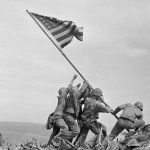
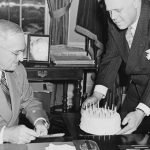
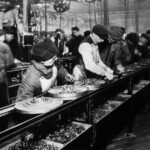
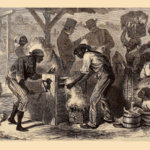
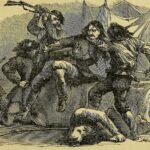
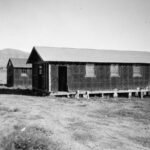
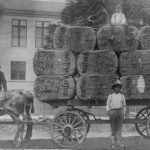
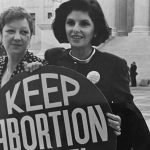
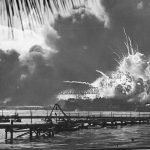
Nanking was not a “village’, it was and is a city, a rather large one.